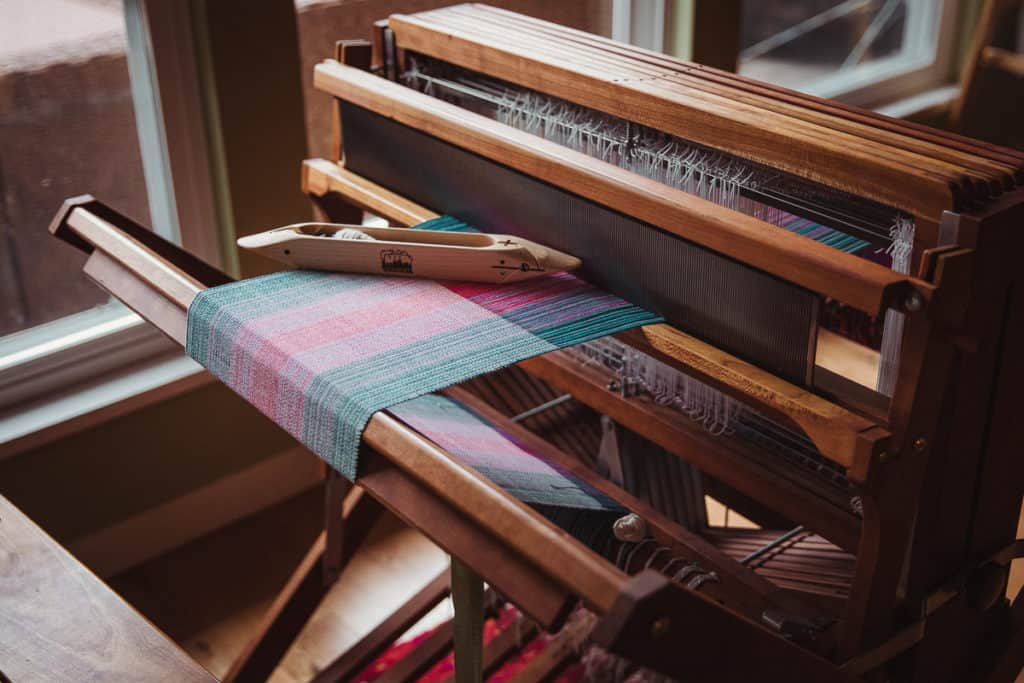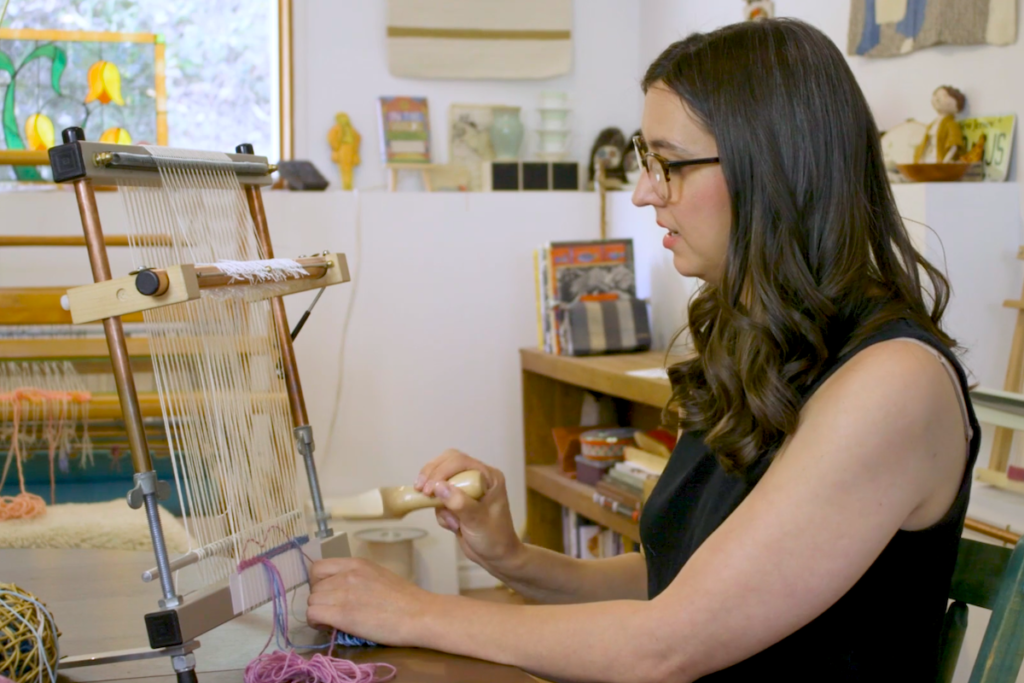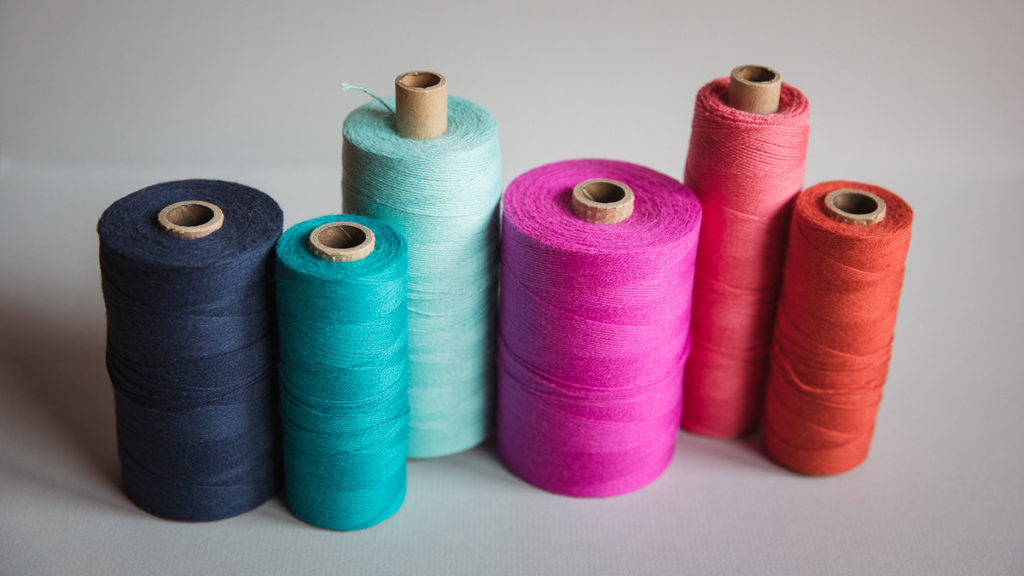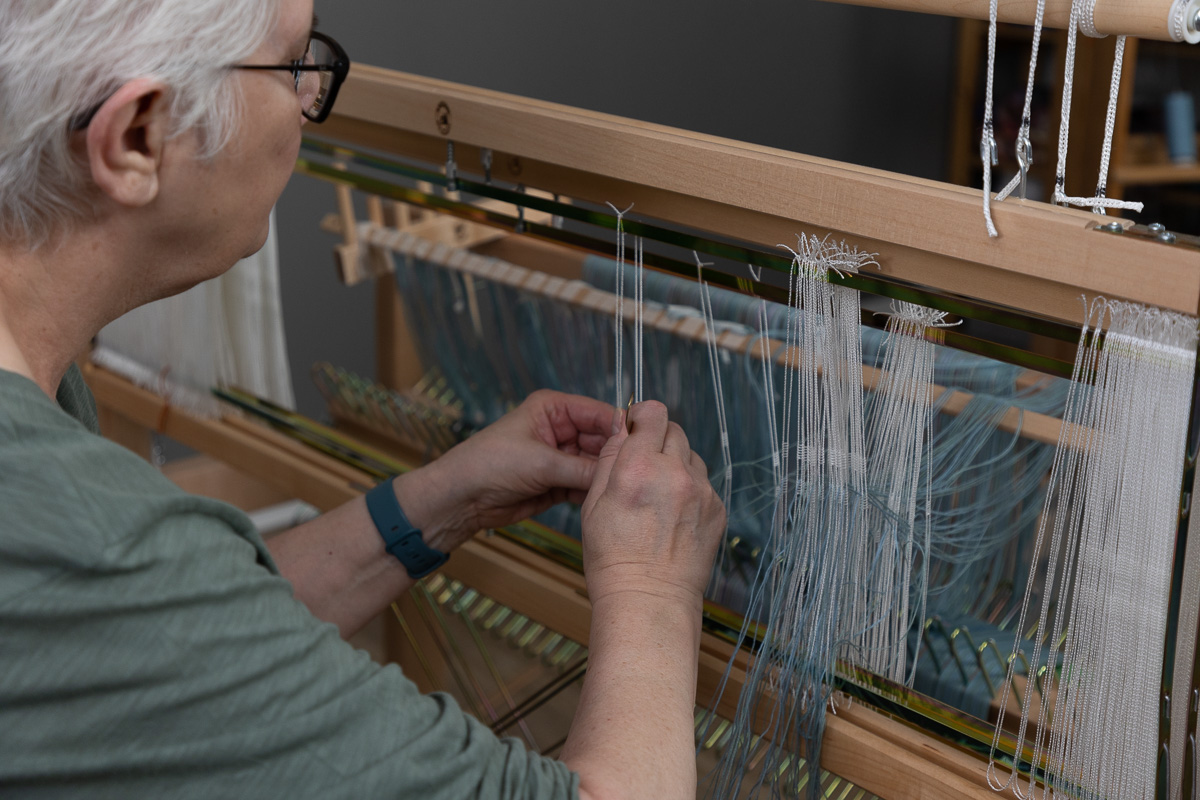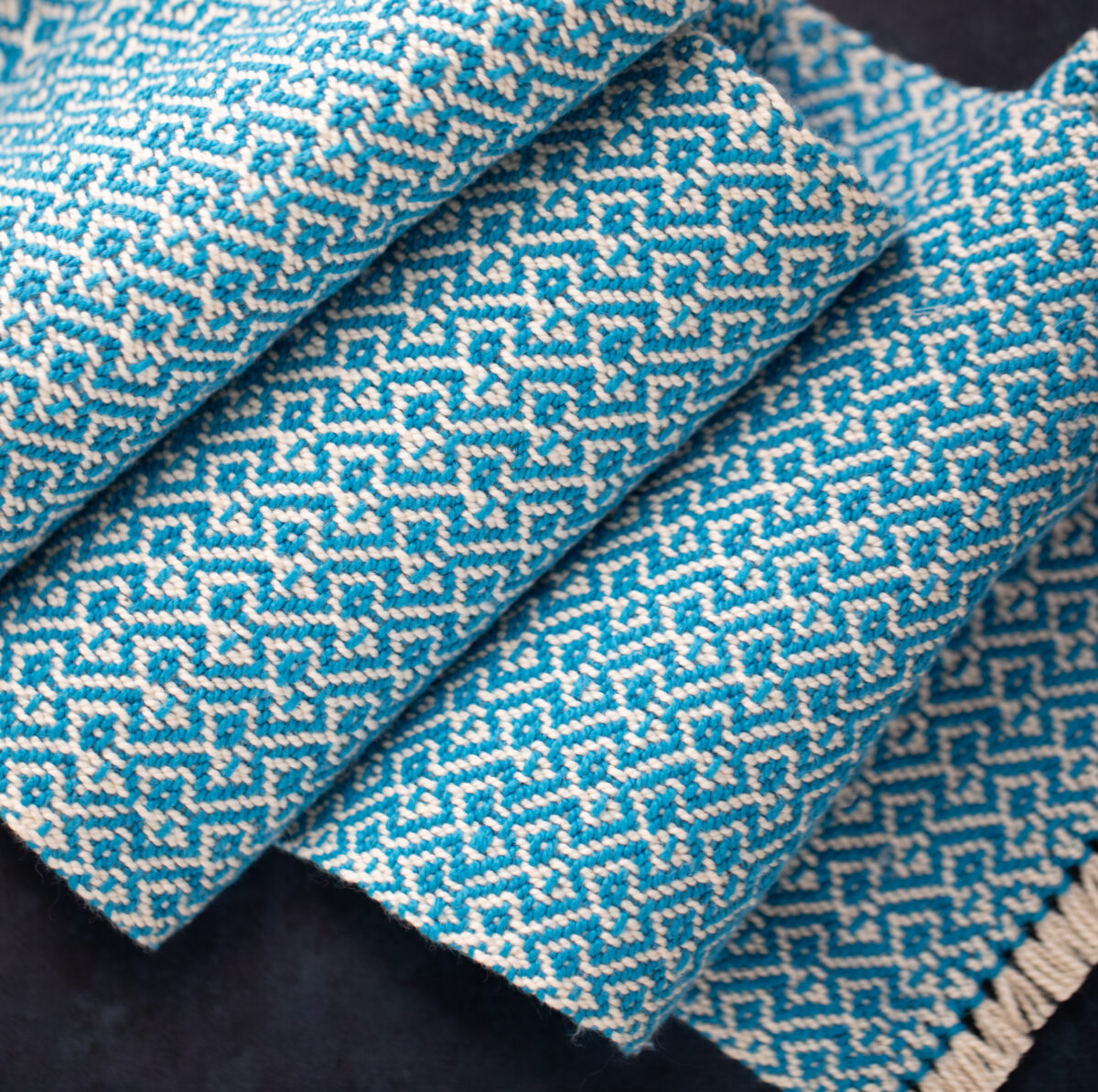
Three Fundamental Weave Structures (And Why You Need To Know Them)
Do you find yourself fondling fabrics? Touching textiles? Daydreaming of a home or wardrobe featuring your very own handwoven fabrics? How would you go about choosing fabric for your cushion or your chair or your skirt, let alone design that fabric yourself? If form follows function, then let’s start to read our fabrics and understand how different weave structures give us the characteristics we want.
Warp and Weft, Under and Over
We can define weave structures by the ways the threads pass over and under each other. The warp is what is on the loom under tension and runs vertically in the cloth. It is lowered and/or raised to form sheds. The weft is what we throw through the open shed and beat in pick-by-pick. The weft runs horizontally in the cloth.
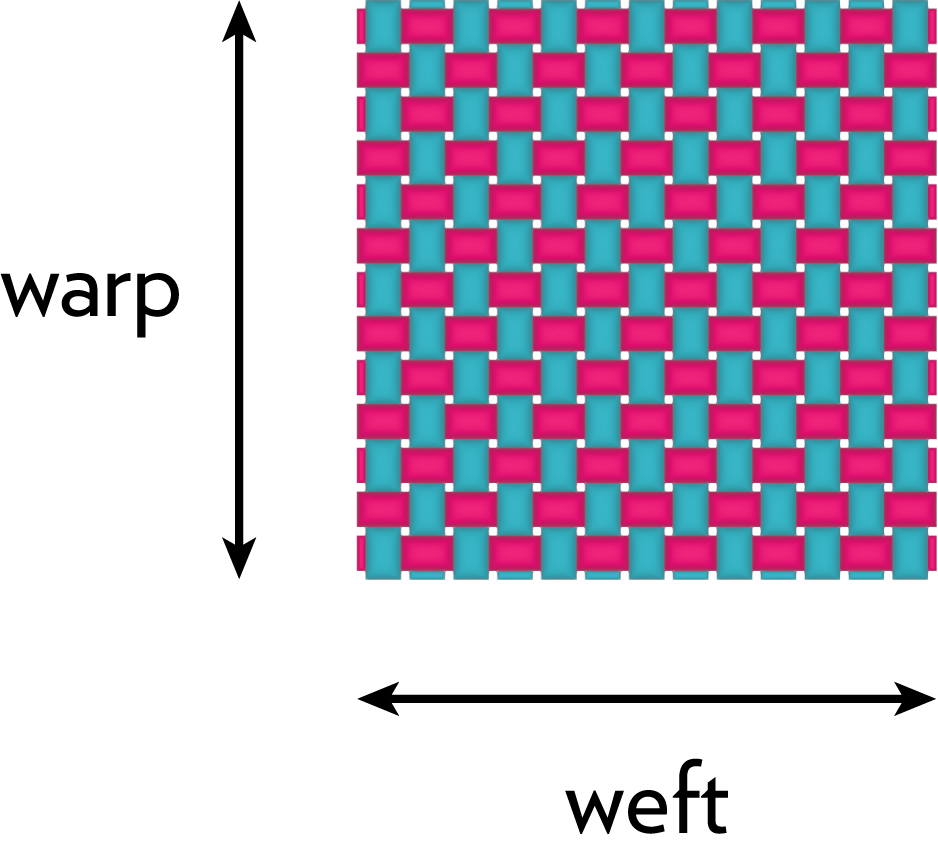
Each time the weft and the warp travel from back-to-front or front-to-back of the cloth, they interlace and form a binding point. These interlacements are what form the web, stitching the two systems of thread into one piece of cloth. The more interlacements there are, the stronger and more stable the cloth will be. The fewer interlacements, and the longer the float of warp or weft, the weaker and less durable the cloth will be.
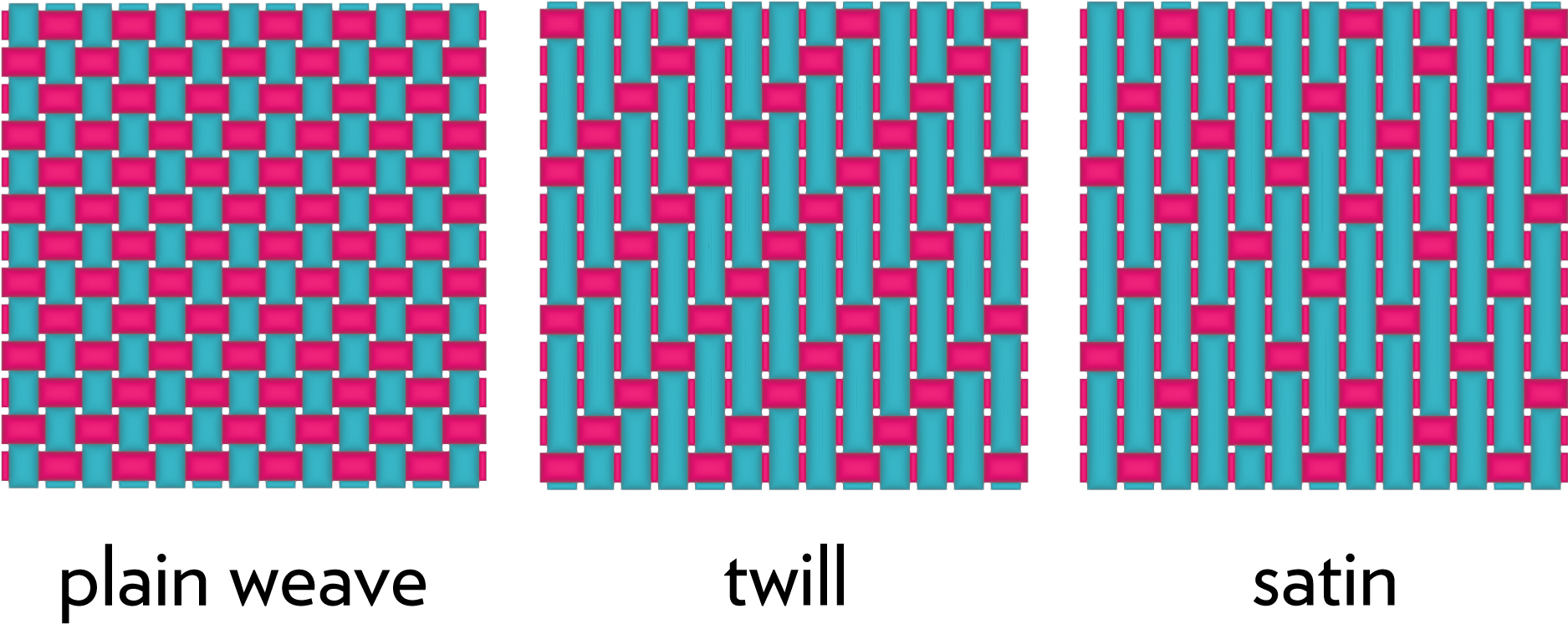
There’s Nuthin’ Plain About Plain Weave
Plain weave is the most ubiquitous cloth. It has the most interlacements and features an over-one, under-one structure. At its most ordinary, each thread is held apart from its neighbouring thread.
We can achieve plain weave with just two shafts, although, with finer threads, it is usually woven with the threads spread out over four or more shafts to prevent crowding the heddles on the shafts. Sometimes you will see plain weave referred to as tabby.
Examples: chambray, chiffon, dimity, muslin, percale, poplin.
Suggested courses in the School: Essential Weaving with Felicia Lo, Colour & Weave on Rigid Heddle Loom with Amanda Wood, Handwoven Colour with Felicia Lo.
The Twill Drill
Twill is based on floats where threads can go over and under more than one consecutive thread in the cloth. An ordinary twill has these interlacements and floats move one thread to the side for each weft pick, resulting in characteristic diagonal lines across the cloth.
Twill can be woven on a minimum of three shafts. The distance that the warp thread floats doesn’t have to be the same as the weft thread floats, so you can end up with clear and distinctive faces to the fabric. A classic example of this is your denim jeans, where your jeans are mostly indigo blue on the outside but are dominated by white threads on the inside.
Twill weaves have fewer interlacements than plain weave as the floats are longer, and different twill weaves may have a different number of interlacements from each other. All this affects functional characteristics, such as stability and durability. As such, twills tend to have a higher thread count than plain weaves.
Examples: crystal twill, denim, dornick twill, gabardine, goose-eye, granite weave, herringbone, twill damask
Suggested courses in the School: The Intentional Weaver with Laura Fry; Weaving Twills on 4-Shafts with Felicia Lo.
Smooth as Satin
When we think of satin, we think of shiny and smooth luxury fabrics. This smooth finish is the defining feature of satin weaves—a surface of either warp (satin) or weft (sateen) which looks like magic is holding it together somehow. The key to satin structures is this illusion and so each place where the threads interlace needs to disappear to our eyes. To do this, you need to arrange the interlacement points so they don’t line up in an obvious way and their pattern is not a visible feature of the cloth.
Satin, at its simplest, requires a minimum of five shafts. With so few places where the warp and weft interlace, a stable satin fabric also requires the threads to be much closer together. This higher thread count certainly contributes to its expense!
Mixing It Up
We can change up these weave structures and give the cloth different qualities depending on how close or far apart the threads are: whether the warp or weft are set the same as each other or not, with threads of different textures, or with threads of different colours. Many variations have been given special names over the years.
We can also derive all sorts of unique structures by doubling, transposing, or combining different weave structures. If we enlarge plain weave by substituting every thread with two threads, we get a basket weave structure. We can do the same thing with twill to produce excellent coat fabrics. We can move, repeat, or regroup threads to produce new twill fabrics, even taking the satin interlacement points as our basis. With practice, you will start to recognize patterns in even the most complex-looking fabrics.
Unlocking Your Potential
Once you start to see the underlying structures of the fabrics around you, the weaving world is your oyster! When you have an idea about a fabric you would like to make and what qualities you want it to have, knowing weave structures helps you to draft and plan out that fabric. Whether your ideas spark from the floor tiles at your local café, or from a swatch of fabric in your own sample library, being able to take that idea and turn it into the cloth you want takes time, knowledge and practice. Start by observing the weave structures of the fabric you encounter out in the wild and you are one step closer to living the dream.
Looking for books on weave structures? My favourites: Sharon Alderman’s Mastering Weave Structures, and Ulla Cyrus-Zetterström’s Manual of Swedish Handweaving. Do you have a favourite resource on weave structures? Share them with the community in the forums!

